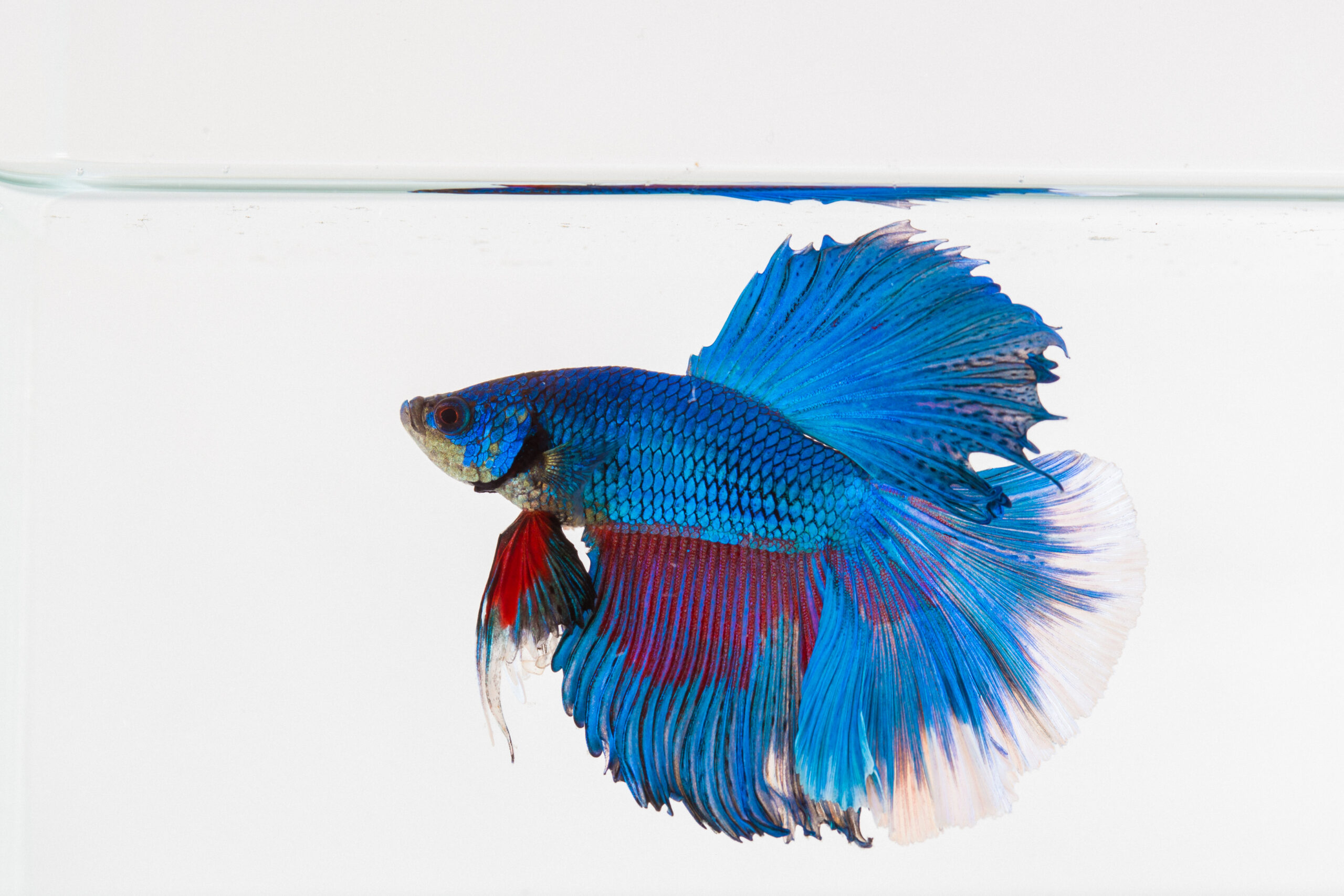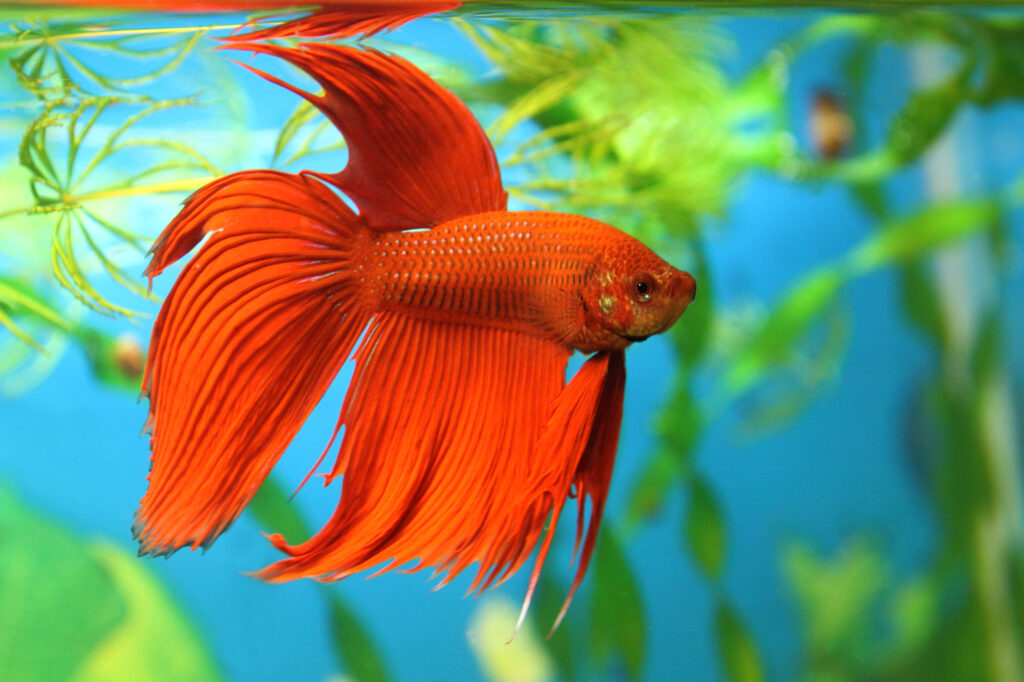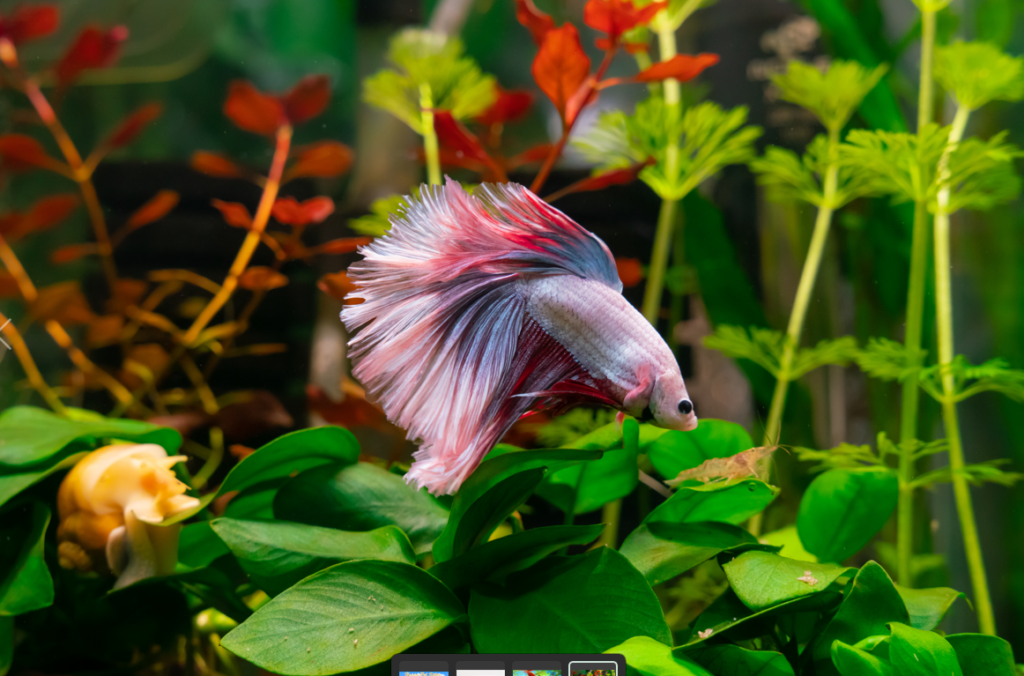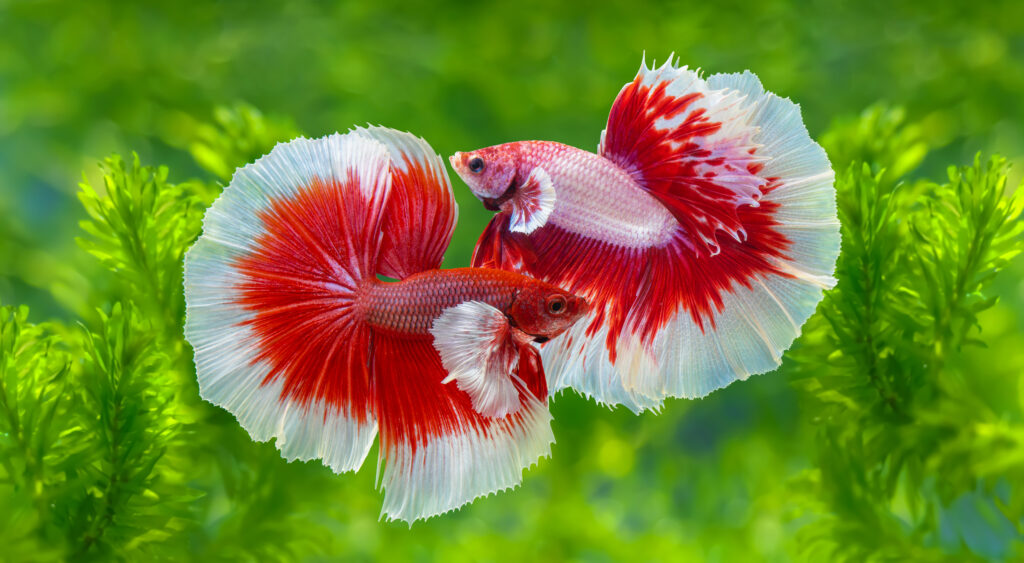
Beta Fish Care 101
How to Take Great Care of Your Betta Fish
With its strikingly beautiful appearance, the betta fish has become a popular aquarium pet. But not everyone is ready to provide the care it needs. If you are thinking about getting a betta fish, do your research first. This article is a great place to start. After you finish reading it, you will know what it takes to care for a betta.
Tank Size
What size tank does a betta fish need? Betta fish can’t thrive in a small vase or glass bowl. That’s because they need lots of space to swim around. If they feel cramped, they will get frustrated and depressed. A 5-gallon tank is probably large enough for a single betta. But 10 gallons is preferable and becomes necessary if you have more than one fish.

The Ideal Betta Fish Environment
It’s important to mimic the betta’s natural habitat as closely as possible. To accomplish this, you will need to follow these guidelines:

· Use gentle water filtration to minimize the water’s current.
· Keep the water’s temperature somewhere between 72- and 82-degrees F.
· The water’s pH level should be around 6.5 to 7.
· Bettas need plants to rest and hide in. Some good options include the Amazon sword, Java fern, and hornwort.
· Choose the right substrate for your betta. Gravel or sand work best for this particular species.
Bettas Need Access to Air
Did you know some fish breathe air? The betta is one of those fish. They have a unique organ called the labyrinth. Most fish keepers agree that bettas need access to air. You can provide that access by making sure your betta has a clear path to the water’s surface. You can also put a plant near the surface. This will allow your fishy friend to rest while taking a breath of air.
Regular Tank Maintenance
If you want your betta to thrive, you need to maintain the tank’s ideal conditions. This involves:
· Checking the filter and water temperature every day.
· Testing the quality of the water every week.
· Frequently changing the water. But don’t take out all the water at once. Instead, replace just a third of it each time. This will prevent sudden environmental changes.
· Cleaning tank decorations whenever necessary.
· Removing debris from the bottom of the tank.
· Changing the filter every month.
Provide a Meat-Based Diet and Feeding
So what do betta fish eat? You may have heard that bettas can thrive on a diet of plants. Don’t believe that myth. This little fish is definitely a carnivore.
Now you’re likely wondering “What Should I Feed my Betta Fish?” and “How Often?” The ideal diet for a betta would consist of live foods, like brine shrimp, larvae, and bloodworms. However, most fish keepers aren’t able to provide a 100% live food diet. If that sounds like you, don’t fret. Just do your best. Provide as many live foods as you can, then fill in with the following:
· Frozen and freeze-dried foods (Technically these are also considered live but in a different form)
· Betta Pellets
· Betta Flakes
· Feed an adult betta once or twice per day.
· When feeding pellets, give your betta 2-4 pellets per day.
· When feeding live foods, give your betta 2-3 pieces per day.
Important Note: When shopping for pellets or flakes, avoid products that contain lots of fillers. Instead, choose meat-based options that are made of high-quality ingredients. The better the food, the healthier your betta will be.
Living with Other Fish
Bettas are known for their aggressive nature. That’s why betta fish often do well on their own. As long as they have lots of plants and room to swim, they will be content living alone. So can betta fish live with other fish? It’s possible to put bettas in a tank with other fish. It just has to be the right fish and the tank must be large enough to accommodate all of them. You can have more than one fish in a betta fish tank if you follow these tips:
· Never put more than one male betta in the same tank. They will fight each other, possibly to the death.
· Male bettas can live with other, non-aggressive fish species. They can also live with other aquatic creatures, like snails and frogs.
· Female bettas can live together if they have enough tank space. If they are overcrowded, they will start to fight.
· Female bettas can also live in a community tank with other fish species. Make sure the species you choose are compatible with bettas.

In Conclusion
Taking care of a betta fish involves far more than just putting it in a vase or glass bowl. So, make sure you are ready for this responsibility before getting a betta. If you are the right person for the job, caring for a betta will bring you great joy!
With its strikingly beautiful appearance, the betta fish has become a popular aquarium pet. But not everyone is ready to provide the care it needs. If you are thinking about getting a betta fish, do your research first. This article is a great place to start. After you finish reading it, you will know what it takes to care for a betta.
About the Author:
Savanna Westwood
Savanna Westwood is the Owner and Founder of The Savvy Sitter, Pet Sitting and Dog Walking, LLC. She has grown up with animals all her life and enjoys spending time with them. Savanna has lived in the Winter Garden and Windermere Area for over 30 years. When she is not taking care of Fur Friends, one can find her reading, practicing archery, riding, and devising ways to provide additional and excellent services to clients. Savanna is a Certified Professional Pet Sitter with Pet Sitter International's CPPS certification and also holds certification in Pet First Aid and CPCR for Pet-Care Professionals.


Hey! I have a betta! His name is pokey and he is 0 years old. I feed him EVERY day!
Hey! I have a betta fish! His name is pokey and he’s 2 months old. I feed him EVERY day!
Sorry I duplicated my sentence 2 times.